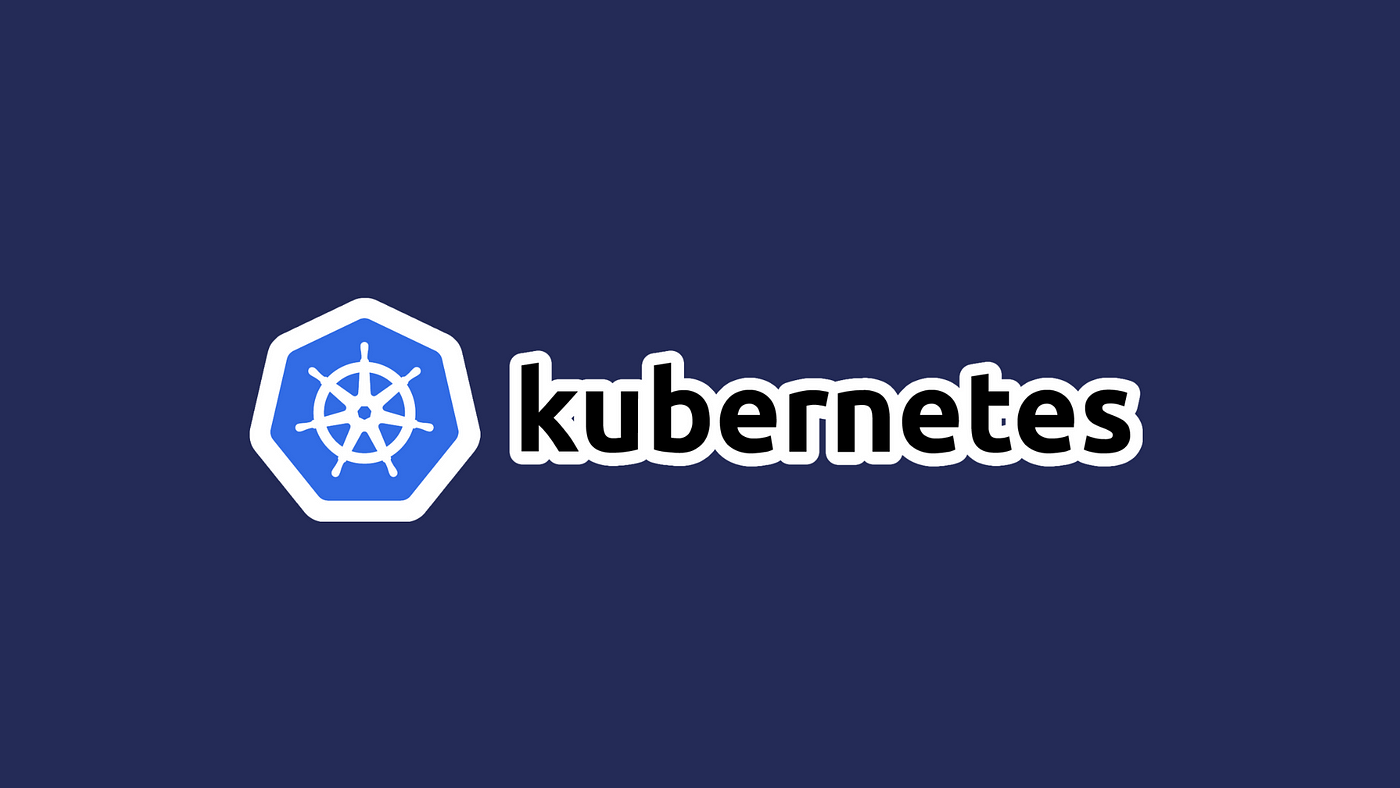How to Build a Kubernetes Cluster Using kubeadm
 vansh bhardwaj
vansh bhardwajTable of contents
- Introduction to Kubernetes and kubeadm
- Requirements for Kubernetes Cluster
- Steps to Set Up the Kubernetes Cluster
- Step 1: Set Up AWS EC2 Instances
- Step 2: Update and Upgrade Both Nodes
- Step 3: Install Docker on Both Nodes
- Step 4: Install kubeadm, kubelet, and kubectl on Both Nodes
- Step 5: Initialize the Master Node
- Step 6: Add the Worker Node to the Cluster
- Now, on the worker node, run the following commands:
- Step 7: Verify the Cluster
- Step 8: Deploy an Application (Nginx)
- Conclusion

Introduction to Kubernetes and kubeadm
Kubernetes (K8s) is an open-source container orchestration platform that automates the deployment, scaling, and management of containerized applications. It provides a framework to run distributed systems resiliently, offering features like scaling, failover, and service discovery. Setting up a Kubernetes cluster is a fundamental step for developers and DevOps engineers aiming to manage containerized applications at scale. One of the most efficient ways to create and manage a Kubernetes cluster is by using kubeadm, a tool designed to bootstrap Kubernetes clusters.

In this guide, we will set up a Kubernetes cluster with one master node and one worker node using kubeadm on AWS EC2 instances.
Requirements for Kubernetes Cluster
Master Node: We will use a
t2.largeinstance.Worker Node: We will use a
t2.mediuminstance.Operating System: Ubuntu 20.04 or newer (64-bit).
Network: Open port 6443 on the master node (used by Kubernetes API Server).
Memory Requirements:
Master Node: Minimum 2 CPUs and 2 GB RAM (recommended 4 GB RAM).
Worker Node: Minimum 2 CPUs and 2 GB RAM.
Tools Required: Docker, kubeadm, kubelet, kubectl.
Steps to Set Up the Kubernetes Cluster
Step 1: Set Up AWS EC2 Instances
- Launch two EC2 instances:
Master Node: Use a t2.large instance.
Worker Node: Use a t2.medium instance.
2. Use Ubuntu as the OS.
3. Open the necessary ports ( port 6443 on the master node)
Step 2: Update and Upgrade Both Nodes
Run the following commands on both the master and worker nodes to update the system:
sudo apt update
sudo apt upgrade -y
Step 3: Install Docker on Both Nodes
Docker is required to manage containers in Kubernetes. Install it using the following commands:
sudo apt install docker.io -y
sudo systemctl start docker
sudo systemctl enable docker
sudo usermod -aG docker $USER
sudo reboot
Step 4: Install kubeadm, kubelet, and kubectl on Both Nodes
These tools are essential for setting up and managing the Kubernetes cluster:
- Add the Kubernetes signing key:
sudo curl -fsSL https://pkgs.k8s.io/core:/stable:/v1.31/deb/Release.key | sudo gpg --dearmor -o /etc/apt/keyrings/kubernetes-apt-keyring.gpg
2. Add the Kubernetes repository:
echo 'deb [signed-by=/etc/apt/keyrings/kubernetes-apt-keyring.gpg] https://pkgs.k8s.io/core:/stable:/v1.31/deb/ /' | sudo tee /etc/apt/sources.list.d/kubernetes.list
3. Update the package list:
sudo apt update
4. Install kubeadm, kubelet, and kubectl:
sudo apt install -y kubelet kubeadm kubectl
Step 5: Initialize the Master Node
On the master node, run the following commands:
- Switch to the root user:
sudo su
2. Initialize the cluster:
kubeadm init
3. Set up the kubeconfig for kubectl:
export KUBECONFIG=/etc/kubernetes/admin.conf
4. Set up a pod network using Weave Net:
kubectl apply -f https://github.com/weaveworks/weave/releases/download/v2.8.1/weave-daemonset-k8s.yaml
Step 6: Add the Worker Node to the Cluster
On the master node, generate the join command:
kubeadm token create --print-join-command
The output will be similar to:
kubeadm join 172.31.84.246:6443 --token jcgr7p.8x2yqehcg0jbsk80 --discovery-token-ca-cert-hash sha256:cfd5cce76dfe4330f0cd8fed5feed709bdb0efcf1fa0656f188475e3bda7563f
Copy this command and use it on the worker node to join the cluster.
Now, on the worker node, run the following commands:
- Switch to the root user:
sudo su
2. Reset pre-flight checks
kubeadm reset pre-flight checks
3. Use the join command generated earlier to connect the worker node to the cluster:
kubeadm join 172.31.84.246:6443 --token jcgr7p.8x2yqehcg0jbsk80 --discovery-token-ca-cert-hash sha256:cfd5cce76dfe4330f0cd8fed5feed709bdb0efcf1fa0656f188475e3bda7563f --v=5
Note -> Append “--v=5” at the end, this ensures we use version 5 to join kubeadm
We should get the following output “This node has joined the cluster”
Step 7: Verify the Cluster
On the master node, verify that the worker node has successfully joined the cluster:
kubectl get nodes
You should see an output like this:
NAME STATUS ROLES AGE VERSION
ip-172-31-47-111 Ready <none> 2m38s v1.31.1
ip-172-31-84-246 Ready control-plane 33m v1.31.1
Step 8: Deploy an Application (Nginx)
To test the cluster, deploy an Nginx pod:
kubectl run nginx --image=nginx --restart=Never
Check the pod status:
kubectl get pods
You should see an output like this:
NAME READY STATUS RESTARTS AGE
nginx 1/1 Running 0 3m44s
On the worker node, you can verify the pod using Docker commands:
docker ps
ctr -n k8s.io containers list
crictl ps
Note -> Kubernetes 1.20+ deprecated Docker as the default container runtime (June 23) in favor of containerd or CRI-O. If your worker node is using containerd or cri-o, docker ps won’t show running containers. Instead, you can check the running containers using:
For containerd: ctr -n k8s.io containers list
For cri-o: crictl ps
Conclusion
Setting up a Kubernetes cluster using kubeadm is a straightforward process that involves:
Preparing the nodes by installing necessary tools like Docker and kubeadm.
Initializing the master node and setting up the control plane.
Joining worker nodes to the cluster using a token.
Verifying the cluster and deploying applications to test the setup.
With Kubernetes, you now have the ability to deploy, scale, and manage containerized applications efficiently. This setup serves as a foundation for experimenting with advanced Kubernetes features and workloads.
About Me
Hi, I’m Vansh. I’m Building stuff on the web. Exploring Cloud and DevOps. Passionate about creating and scaling solutions. Let’s connect on Twitter: heyyvanshh
Subscribe to my newsletter
Read articles from vansh bhardwaj directly inside your inbox. Subscribe to the newsletter, and don't miss out.
Written by
